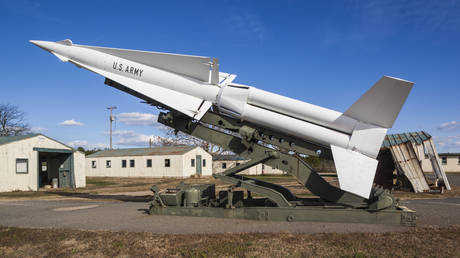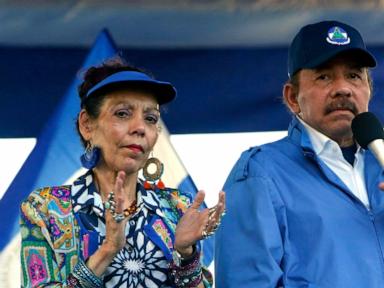ARTICLE AD BOX
LONDON — Western governments should create a “strike fund” to support a wave of industrial action across Iran that will paralyze the state and hasten the end of the regime, according to the son of the country’s former leader.
Reza Pahlavi, whose father was the last shah of Iran and was ousted in the 1979 revolution, believes Donald Trump’s nuclear talks with Tehran will fail to deliver peace in the region. But he sees a chance for America and Europe to help the country’s grassroots opposition to overthrow its clerical rulers from within.
In recent years, anger at the regime’s repression and economic mismanagement have boiled over in unusually large public protests. Tehran’s standing across the Middle East has also been heavily dented by the fall of its ally Bashar al-Assad in Syria, and by Israel’s devastating strikes against Hamas and Hezbollah.
With Iran on the back foot, Pahlavi saw an opportunity for Western powers to intensify support for the regime’s opponents and potential defectors. In an interview with POLITICO, he called for cash to be released to help people engage in peaceful civil resistance, with a series of “organized labor strikes that could paralyze the system and force it to collapse.”
Such a “strike fund” could be drawn from frozen Iranian assets, he said. “Paralyzing the regime as a result of work stoppages and strikes — which is the least cost to the nation provided we can fund it — this is something that can happen in a matter of months.”
The specter of mass strikes is a potent one in the context of Iran’s revolutionary history.
Months of strikes — especially by oil workers — were critical in piling extreme pressure on the shah. After the revolution the Islamist regime suppressed the labor movement, but it has reemerged as a potential political factor, and Tehran was taken aback by the scale of action by petrochemical workers in 2021.
Pahlavi, 64, has been touring European capitals talking to government ministers and officials, as well as to private sector investors, to press the case for stepping up assistance for internal dissent. The other option, he fears, will be external action including potential military strikes from the United States or Israel.
“Diplomacy has been exhausted with no actual breakthrough, and at the same time, there’s a concern that if diplomacy fails are we talking about military action?” Pahlavi said. “What we propose is a third way — the best way to avoid having to resort to that scenario. Give the people of Iran a chance, let them be the agent of change, before we have to resort to other measures that are not wanted.”
Nuclear deadline
His intervention comes at a critical moment, with the fate of Iran in the balance.
Trump has authorized direct talks between American and Iranian officials while threatening military action if Tehran does not scale back its nuclear program quickly enough.
At the same time Iran is widely blamed for stirring conflict across the Middle East and beyond, with its long-held policy of supporting Hamas and Hezbollah and supplying Vladimir Putin’s military with drones for attacks on Ukraine.
 Tehran’s standing across the Middle East has also been heavily dented by the fall of its ally Bashar al-Assad in Syria, and by Israel’s devastating strikes against Hamas and Hezbollah. | Morteza Nikoubazl/NurPhoto via Getty Images
Tehran’s standing across the Middle East has also been heavily dented by the fall of its ally Bashar al-Assad in Syria, and by Israel’s devastating strikes against Hamas and Hezbollah. | Morteza Nikoubazl/NurPhoto via Getty ImagesPahlavi regards Trump’s team as crucial allies who are clear about the threat posed by Tehran.
But he believes the United States-led talks on a nuclear deal are doomed. “This regime does not negotiate in good faith,” he said recently. “However well-intentioned, these nuclear talks will throw a lifeline to a crumbling dictatorship and prolong its export of terror and chaos.”
Time is running short. While Trump reportedly blocked Israel’s push for more military strikes against Iran, he set a deadline of mid-May for clear progress on nuclear talks.
Pahlavi believes Tehran will use the talks to play for time and that the West should focus instead on backing internal opposition.
Raiding Iran’s foreign-held assets frozen under international sanctions — worth an estimated $100 billion — could also finance a surge in technological supplies to enable the protesters, dissidents and potential defectors from the regime to communicate and organize among themselves, Pahlavi said.
More Starlink
While the authorities in Iran have persecuted dissent online, Elon Musk’s Starlink terminals providing uncensored internet access are already operating after being smuggled into the country, often at great personal risk to those involved. In recent months the number of Starlink users has increased significantly, and that influx of communications technology needs to continue, Pahlavi said.
“Now there are means to load a particular app on your smartphone that directly links your phone to a satellite without even the need to access the terminals,” he said. Western help needs to focus on “flooding the market with these components — it’s a matter of scaling it and having enough of those smuggled in.”
Regime change has earned a bad name, thanks to the U.S.-led military interventions in Afghanistan and Iraq under President George W. Bush.
Pahlavi’s view is that many of those currently working under poor conditions for the Tehran regime will need to stay in place to help rebuild the country once the ayatollahs are ousted.
While he insisted he was “not interested in power or a post,” he said he would play a role as interim leader to establish a new democratic constitution. “I’m not here to run for office but I have a critical role to play as a person people call upon because they trust me,” he said. “Today’s generation sees that as an element that could be a broker, an agent of change, a leader of transition that can appeal well above the political divisions to a sentiment of national unity.”
Other voices
Pahlavi still stirs skepticism among Iranians, even if he is promising to act solely as a facilitator of change, who will then step aside after seeking to unite the country’s highly splintered opposition camps.
While monarchist chants and symbols have popped up at demonstrations in Iran, other pro-democracy protesters have adopted the slogan that they want “neither a shah, nor a [supreme] leader.” Memories of the out-of-touch elites of the shah’s era and his feared SAVAK secret police run deep.
 Iran is widely blamed for stirring conflict across the Middle East and beyond, with its long-held policy of supporting Hamas and Hezbollah and supplying Vladimir Putin’s military with drones for attacks on Ukraine. | Morteza Nikoubazl/NurPhoto via Getty Images
Iran is widely blamed for stirring conflict across the Middle East and beyond, with its long-held policy of supporting Hamas and Hezbollah and supplying Vladimir Putin’s military with drones for attacks on Ukraine. | Morteza Nikoubazl/NurPhoto via Getty ImagesFundamentally, it is unclear whether any of Iran’s opposition abroad can prove a major force in overthrowing the regime, or whether more significant changes would be more likely to come from rivalries and fractures inside the current state apparatus.
Indeed, according to Sanam Vakil at the Chatham House think tank in London, there are big questions over whether the Iranian people are as close to ousting the regime as Pahlavi suggests. She argues that even if they are, he should not be thought of as the inevitable interim leader-in-waiting.
“His father was ousted for all sorts of reasons. Why are we going to put our money on the son that literally has done nothing in the 46 years since he left Iran?” she said. “It’s important to support Iranian agency. There are so many courageous visionaries inside the country and inside Evin Prison who are highly qualified but treated abhorrently by the Islamic Republic — many Nobel Prize winners, many human rights defenders. We should put money on them.”
For his part, Pahlavi insists he wants a new constitution with three pillars at its core: preserving Iran’s territorial integrity; creating a secular democracy separating religion from government; and enshrining “every principle of human rights,” including protection against discrimination on the grounds of sexuality, religion or ethnic background.
As soon as a referendum is held to ratify these new arrangements, he said, he would step back again. “That’s the end of my mission in life.”
.png)
 2 hours ago
1
2 hours ago
1








 English (US)
English (US)